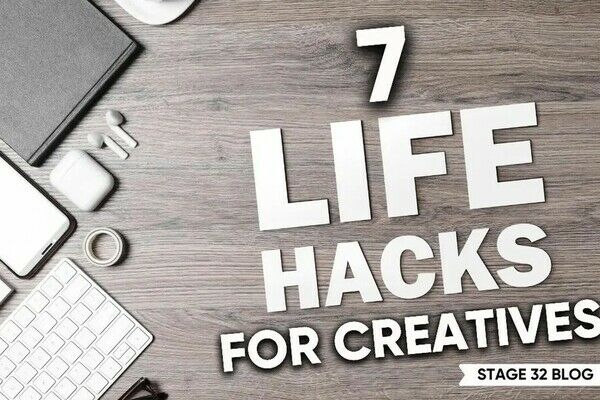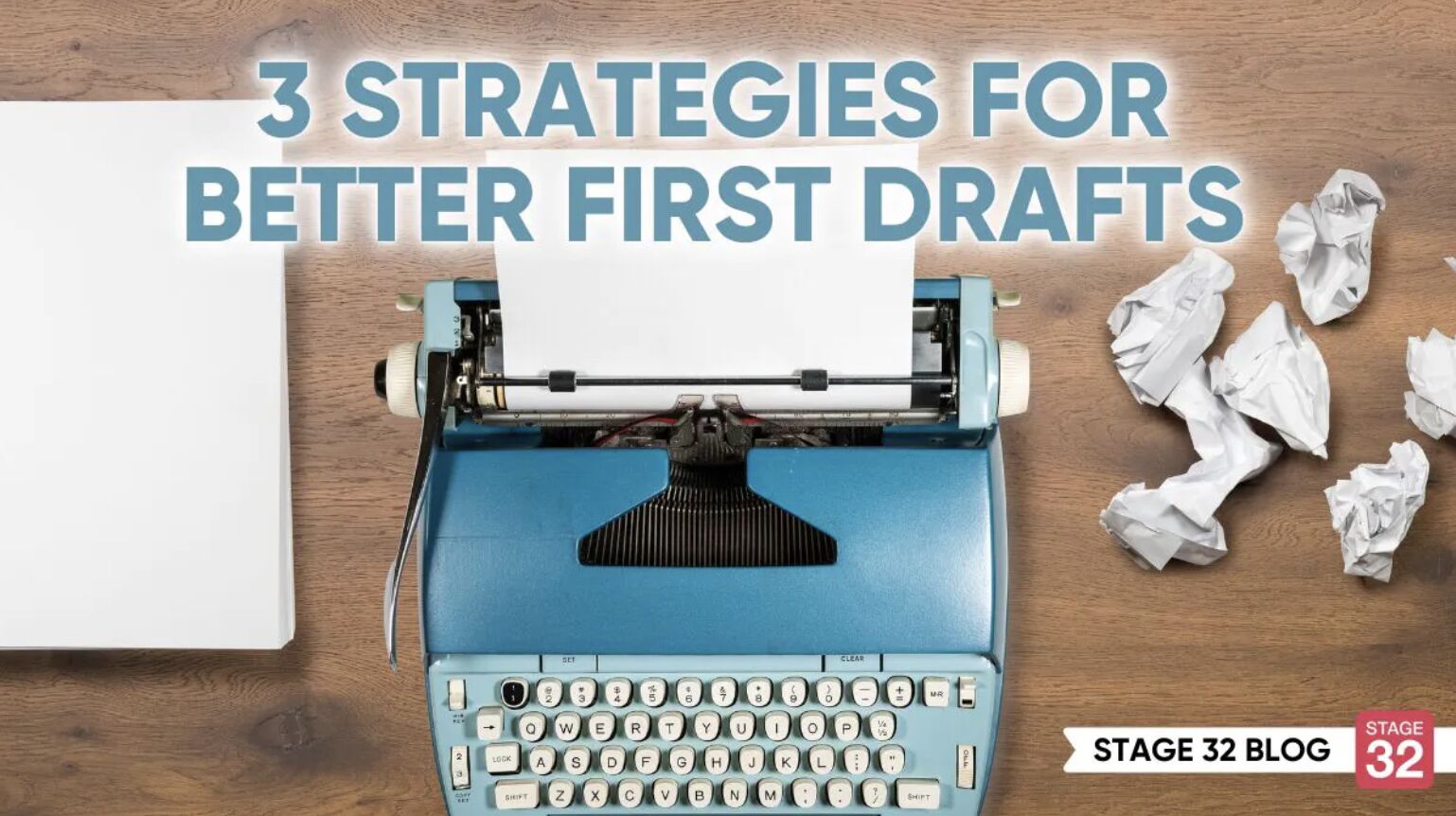3 Strategies For A Better First Draft
As a literature professor and a writing coach, I see a lot of first drafts. In fact, you might even say that first drafts are my specialty. My job in both cases is to guide the writers to a better understanding of their craft and to help them get clarity on the steps that will elevate their projects. Some drafts are in better shape than others when they hit my desk, and so I thought that I’d offer some strategies here to help you improve your first draft process.
But first, a definition. What exactly do I mean by “first draft”?
In reality, the drafting process is (usually) a combination of writing new material and revising what we’ve already done. I don’t know many writers who never read over what they put on the page the day before and tweak it. If you’ve ever typed a line of scene description or dialogue and immediately hit the backspace key to change it, you’re editing as you go.
So if we’re trying to define a “first draft” as some sort of pristine and raw untouched thing that has never seen the red pen (so to speak), I submit that it doesn’t actually exist.
What does exist, though, is the first honest attempt to finish the work and submit it for feedback. And that’s what I mean here by “first draft.” It’s the first version of your project that gets seen by eyes other than your own. It’s the draft you submit for that first round of feedback -- either to your writers’ group, to the script coverage service here on Stage 32, to a writing coach, or to your representation, if they’re the lovely kind that give you notes on your work.
Why is it so important to submit a solid first draft to your readers? Because the ultimate goal is to shorten the distance between first draft and final draft (which simply means the draft that’s ready to be seen by decision-makers). And to do that, you need to move the needle on the kind of feedback you’re getting.
In my line of work as a lit professor, we talk a lot about the three arts of composition: grammar, logic, and rhetoric. And they build on each other in exactly that order. The idea is that if you can’t write a correct sentence, you won’t be able to structure an argument (logic), nor will you be able to deliver it with any kind of persuasive grace (rhetoric).
The same holds true here. If your script is riddled with “grammatical errors” on the level of basic story structure and presentation, those challenges have to be addressed before we can even get to conversations about effectively pacing the flow of scenes, sequences, and acts or the quality of your scene description and dialogue. But if your first draft is solid on the level of “grammar” -- we can jump to more advanced considerations.
So that’s the goal: to produce a first draft that’s as solid as you can make it on the fundamentals so that your reader can help you find ways to take your script from ordinary to extraordinary.

STRATEGY 1: PREWRITING
If you’ve read some of my other Stage 32 blogs, the fact that this is my first strategy shouldn’t surprise you. If there’s anything I preach to writers I coach at all levels and in every context, it’s to invest in your prewriting process. The better your prewriting process is, the easier it is to produce a first draft that works in its major elements.
An effective prewriting strategy is one that helps you troubleshoot the problem areas of the script before you ever hit the page. If you’re working through a plot outline and you can’t seem to get the story to work past the midpoint, that’s a signal to take a step back and figure out why the engine of the story is cutting out on you. If you’re working with your main character and you can’t figure out why they need this adventure, that’s also a sign (and probably intimately connected to your plot problem, by the way).
You have to discover the process that works best for you, and if you’re just starting out, expect to spend time in the trial-and-error phase. There are so many ways to break down your story, so many different ways to approach the brainstorming process. I have been an acolyte of many a guru of story in my own career, and I continue to hybridize my approach as I grow as a writer.
No matter which approach you choose, I recommend investing time in character development and plot structure before you sit down to write the pages. Character and plot are the two most important fundamental aspects of a draft, and the more solidly you can execute these elements, the faster you’ll get past basic feedback to notes that really elevate your project. (If you’re bored with your usual go-to character development process, you might check out my recent post on character outlining for some ideas.)
Remember too that “prewriting” is a bit of a misnomer. Yes, it’s a process you do before you sit down to write pages. But it’s also a process that we can come back to if we encounter resistance as we write. Resistance is a sign that we’ve missed something -- or that a structure we’ve built isn’t quite right. Returning to this place of “what ifs” and “how abouts” is the best way that I’ve found to unblock the story.

STRATEGY 2: CHECK THE SCIENCE
If you are a brand new writer, self-editing can be daunting -- and it’s true that sometimes we don’t know what we don’t know until someone else tells us. And that’s why it’s critical to accept feedback, especially in the early days of your writing career, with humility and an intense desire to learn. Do your best with what you have, and then learn from others who know better. That’s the secret sauce to success.
As a new writer, assume you have a lot to learn and hit the books. Being a student of your craft should probably be Strategy 0. It’s your responsibility to learn the tools of the trade, and the more you can educate yourself, the faster you’ll grow as a writer. (If you’re looking for a great place to start, check out all the opportunities right here on Stage 32!)
Assuming that you’ve studied your craft enough to understand the fundamentals of story structure, you should be able to go through your draft and identify whether your major story beats are lining up properly.
There’s a reason why there’s a calculator on the Save the Cat website that tells you where your major beats should fall depending on the length of your script. There is a physics to the movement of story just like there’s a physics to a rollercoaster. If your beats aren’t timed correctly, the story will lose momentum. So check your physics. Make sure the story is hitting the beats where it should or you risk throwing your reader off your ride.
In addition to checking the physics, check the chemistry. Is there conflict between your characters? Is there conflict within your character? Conflict is the engine that powers your story, and if the propellant is weak, the story will fall flat emotionally.
One of my favorite recent examples of the interplay between character, conflict, and plot is the Apple+ show For all Mankind. I think the writers did an incredible job setting up the characters with clearly-defined traits and flaws, and then the twists of the plot serve to put those characters in the absolute worst situations for their particular flaws. The result? Genuine emotional intensity.
Remember, in a first draft, we’re not necessarily going to nail that level of synergy between the story elements. But that’s what feedback is for. Put the elements in place as best as you can, and then let your reader help you see ways to amplify the effect.

STRATEGY 3: FORMATTING AND PROOFREADING
If I have a pet peeve as a reader, it’s getting a script (or an essay, for that matter) that’s riddled with grammatical and spelling mistakes, that’s incorrectly formatted, and that’s way over the appropriate page count.
You may still be learning the fundamentals of telling a story. That’s okay! We learn by writing and through feedback on our work. We are all students of the craft, no matter how long we’ve been practicing it.
But grammar and formatting? There is no reason why a first draft -- even a first draft -- should go to a reader with these issues. These elements that are 100% in your control as a writer -- and you’re supposed to be a professional, right? So be a professional. Treat your own work with the respect you want it to be given.
Take two minutes to run a check for spelling. Use scriptwriting software and get a reference book like Dave Trottier’s The Screenwriter’s Bible or find some go-to online resources that will help you figure out how to do the unusual stuff. No reader should have to tell you to do these things -- they should be as automatic as breathing.
When you send in a script that contains these kinds of errors, it’s distracting and a waste of the precious resource of your reader’s time and attention. You want your reader to help you elevate the story -- not correct your spelling.
And a quick note here about page count. Shorter is better.
Almost every single first draft script I’ve seen that is 115+ pages long is overwritten. Being able to tell a story under the constraint of page count is one of the hallmarks of our craft -- and it’s also one of the signs that you’ve achieved a certain level of mastery. So as you make a pass through your story before it leaves your hands for a reader’s review, please -- check your page count and be ruthless.
If you’re worried about being too lean, don’t. If your reader thinks you could build out some aspect of the story, they’ll let you know -- and you’ll have the real estate available to do it. But if you’ve managed to tell a complex, rich story in a way where no word is wasted and every scene pulls its weight, you will get people’s attention -- I promise you.
![]()
Accelerate Your Project Timeline
The goal for a first draft is to get the highest quality, most detail-focused feedback possible from your reader. This is how you shorten the distance between first draft and final draft -- and this is one of the very best ways to accelerate your creative production. The less time you need to spend rewriting, the sooner you can get to your next project!
If you want to take a look at the short checklist that I use to review my first drafts before I send them off, you can download it for free here.
Happy writing!
Let's hear your thoughts in the comments below!
Got an idea for a post? Or have you collaborated with Stage 32 members to create a project? We'd love to hear about it. Email Emily at blog@stage32.com and let's get your post published!
Please help support your fellow Stage 32ers by sharing this on social. Check out the social media buttons at the top to share on Instagram @stage32 Twitter @stage32 Facebook @stage32 and LinkedIn @stage-32
| 6 Steps To A Successful Writing Partnership |
| Drawing The Boundaries Between Actor & Character |
Search Stage 32 Blog
There are now 4043 blog posts for you to enjoy. Search them all by tags below.
Acting, Advice, Cinematography, Coffee & Content, Composing, Contests, Distribution, Featured, Filmmaking, Financing, Inspirational, Networking, Producing, Screenwriting, Success Stories, Tips, Trending,Relevant Tags
Recommended Articles

Stage 32 Now Certifying Centro de Portugal Film Commission!

Happy Thanksgiving From Stage 32: We Are Thankful For YOU

Insider Intel: 2025- Your Year of Breakthroughs (+ What's Coming in 2026)

Coffee & Content: Why Your Next Step Matters More Than the Perfect Step

Green Lights and Grey Areas: Expanding Creative Collaboration in Publishing

Want Success in the Entertainment Industry? Start Writing Your Own Narrative

Don't Let the Momentum of November Write Club Die: How to Stay Active Into 2026 & Beyond!

7 Life Hacks For Creatives

Stage 32 + DramaBox Join Forces to Launch World's First Vertical Drama Incubator






